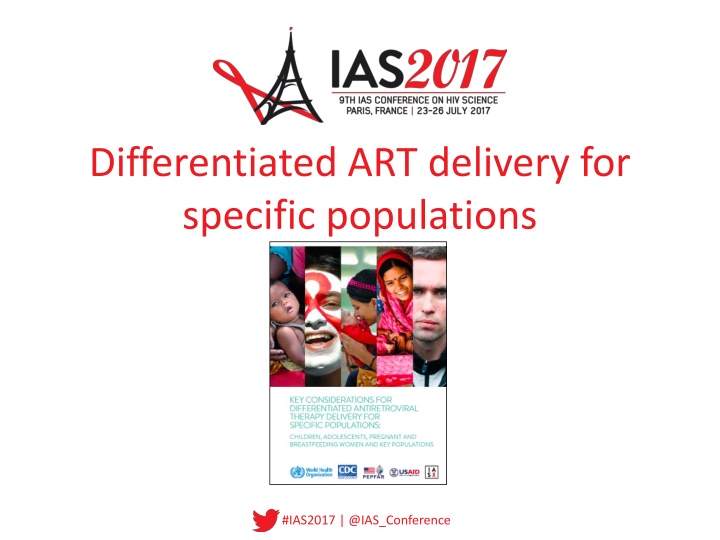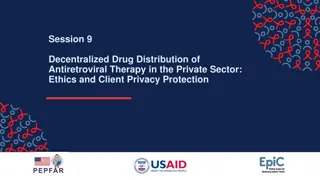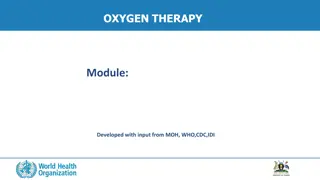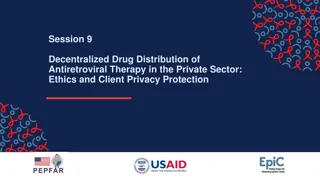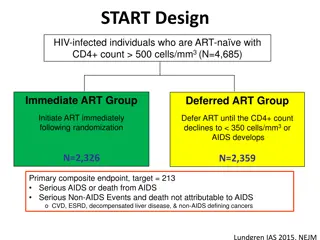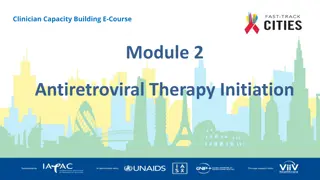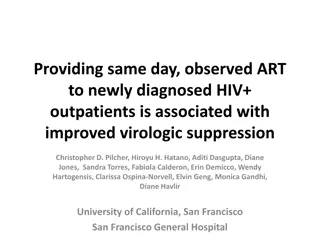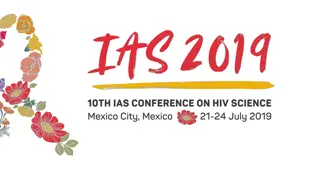Optimizing Antiretroviral Therapy Delivery for Specific Populations
Tailored antiretroviral therapy (ART) delivery models benefit stable patients by addressing inequities and involving key populations. Differentiated care extends to adolescents, pregnant women, and key populations, emphasizing psychosocial support. Transitioning between client categories is crucial in a differentiated ART approach. It aims to simplify access, reduce costs, and enhance community involvement in HIV treatment and care.
Download Presentation

Please find below an Image/Link to download the presentation.
The content on the website is provided AS IS for your information and personal use only. It may not be sold, licensed, or shared on other websites without obtaining consent from the author.If you encounter any issues during the download, it is possible that the publisher has removed the file from their server.
You are allowed to download the files provided on this website for personal or commercial use, subject to the condition that they are used lawfully. All files are the property of their respective owners.
The content on the website is provided AS IS for your information and personal use only. It may not be sold, licensed, or shared on other websites without obtaining consent from the author.
E N D
Presentation Transcript
Differentiated ART delivery for specific populations Nathan Ford WHO #IAS2017 | @IAS_Conference
#IAS2017 | @IAS_conference 2016 Stable patients on antiretroviral therapy The following criteria define stable patients on antiretroviral therapy*: Receiving ART for at least 1 year AND no adverse drug reactions requiring regular monitoring AND No current illnesses or pregnancy AND Good understanding of lifelong adherence AND Evidence of treatment success: two consecutive undetectable viral load measures (or, in the absence of viral load monitoring, rising CD4 counts or CD4 counts above 200 cells/mm3 and objective adherence measure) *Note: Stable, rapidly growing young children may need to be monitored more frequently due to greater risk of disease progression and for treatment dosing/ weight changes.
#IAS2017 | @IAS_conference Key points Clinically stable children, adolescents and pregnant and breastfeeding women as well as members of key populations (people who inject drugs, sex workers, men who have sex with men, transgender people and people living in prisons and closed settings) can benefit from access to differentiated antiretroviral therapy (ART) delivery models Services should be tailored to keep families together as much as possible to simplify access and reduce cost Differentiated ART delivery can address inequities in the access to HIV treatment services and enable key population communities to be more involved in HIV treatment and care Extension of differentiated care to adolescents and pregnant and breastfeeding women as well as members of key populations has highlighted the importance of psychosocial support and the need to better define how a differentiated ART delivery model can provide psychosocial support components
#IAS2017 | @IAS_conference Transitions between categories of clients in a differentiated ART delivery approach
